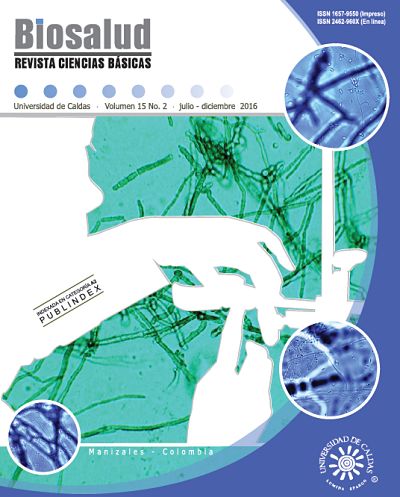Authors
Abstract
Caffeine is a highly consumed stimulant of the nervous system. Although caffeine has diverse effects on different brain functions, little is known about the specific pharmacokinetics of this substance in the brain. For instance, most studies that assessed caffeine distribution in the rat brain have only measured caffeine levels in the cortex and striatum but not in more specific brain areas.Aims: The purpose of this work was to measure the caffeine concentration in blood and different brain regions (i.e. cortex, striatum, hippocampus, cerebellum and brainstem) at different times after the administration of a single intraperitoneal dose of caffeine.Methods: Adult Wistar rats (250 to 300 gr) were injected with a single intraperitoneal dose of 30 mg/ Kg of caffeine. 20, 40, 60 and 80 minutes after administration, subjects were sacrificed by decapitation and samples of plasma, cerebral cortex, striatum, hippocampus, cerebellum and brainstem were obtained. Caffeine levels in the blood and each brain structure were measured by RP-HPLC and statistical analysis was performed. Results: Caffeine levels were higher in the plasma compared to all the brain structures studied. Different brain regions displayed similar caffeine concentrations. For all brain regions, the maximal concentration levels of caffeine were reached in the first 40 minutes after caffeine administration.Conclusions: The results support previous studies that show similar caffeine concentration between cortex and striatum, but also extend the results to other brain structures. Furthermore, caffeine concentration increases similarly in the plasma and brain structures. 40, 60 and 80 minutes after administration, caffeine concentration in the blood is almost two times higher than in the brain. This suggests that the effects of caffeine on different brain functions do not depend on pharmacokinetic differences between brain areas and are rather explained by pharmacodynamics.
Keywords
References
2. Ribeiro JA, Sebastião AM. Caffeine and adenosine. J Alzheimers Dis.. 2010; 20:3-15.
3. Cunha RA, Agostinho PM. Chronic caffeine consumption prevents memory disturbance in different animal models of memory decline. J Alzheimers Dis. 2010; 20: 95-116.
4. Santos C, Lunet N, Azevedo A, de Mendonça A, Ritchie K, Barros H. Caffeine intake is associated with a lower risk of cognitive decline: a cohort study from Portugal. J Alzheimers Dis.
2010; 20:175-85.
5. Borota, D, Murray, E., Keceli, G., Chang, A., Watabe, J.M., Ly, M., Toscano, J.P. and Yassa, M.A. “Poststudy caffeine administration enhances memory consolidation in humans.” Nature neurosc 2014; 17(2):201-203.
6. Chen J-F, Yu L, Shen H-Y, He J-C, Wang X, Zheng R. What knock-out animals tell us about the effects of caffeine. J AlzheimersDis. 2010; 20:17-24.
7. McPherson PS, Kim Y-K, Valdivia H, Knudson CM, Takekura H, Franzini-Armstrong C, et al. The brain ryanodine receptor: a caffeine-sensitive calcium release channel. Neuron. 1991; 7(1):17-25.
8. Fredholm BB, Bättig K, Holmén J, Nehlig A, Zvartau EE. Actions of caffeine in the brain with special reference to factors that contribute to its widespread use. Pharmacol. Rev. 1999; 51
(1):83-133.
9. Solinas M, Ferré S, You Z-B, Karcz-Kubicha M, Popoli P, Goldberg SR. Caffeine induces dopamine and glutamate release in the shell of the nucleus accumbens. J. Neurosci. 2002; 22(15):6321-4.
10. Yoshimura H. The potential of caffeine for functional modification from cortical synapses to neuron networks in the brain. CurrNeuropharmacol. 2005; 3(4):309.
11. Nehlig A, Boyet S. Dose–response study of caffeine effects on cerebral functional activity with a specific focus on dependence. Brain Res. 2000; 858(1):71-7.
12. Corodimas KP, Pruitt JC, Stieg JM. Acute exposure to caffeine selectively disrupts context conditioning in rats. Psychopharmacology. 2000; 152(4):376-82.
13. Costa M, Botton P, Mioranzza S, Souza D, Porciuncula L. Caffeine prevents age-associated recognition memory decline and changes brain-derived neurotrophic factor and tirosine kinase receptor (TrkB) content in mice. Neurosc. 2008;153(4):1071-8.
14. Acquas E, Tanda G, Di Chiara G. Differential effects of caffeine on dopamine and acetylcholine transmission in brain areas of drug-naive and caffeine-pretreated rats. Neuropsychopharmacology.2002;27(2):182-93.
15. Ballesteros-Yáñez I, Castillo CA, Amo-Salas M, Albasanz JL, Martín M. Differential Effect of Caffeine Consumption on Diverse Brain Areas of Pregnant Rats. J Caffeine Res. 2012; 2(2):90-8.
16. Carey RJ, De Palma G. A simplified method for the measurement of caffeine in plasma and brain: evidence for a cortical-subcortical caffeine concentration differential in brain. J. Neurosci. Methods. 1994; 53(1):19-22.
17. Ferré S, Guix T, Sallés J, Badia A, Parra P, Jané F, et al. Paraxanthine displaces the binding of [< sup> 3 H] SCH 23390 from rat striatal membranes. Eur. J. Pharmacol. 1990; 179(3):295-9.
18. Guide for the Care and Use of Laboratory Animals: Eighth Edition: The National Academies Press; 2011.
19. Parliament E, Union tCotE. Directive 2010/63/EU of the European Parliament and of the Council of 22 September 2010 on the protection of animals used for scientific purposes. Official J Eur Union.2010; 276.
20. Serra A, Macià A, Romero M-P, Pinol C, Motilva M-J. Rapid methods to determine procyanidins, anthocyanins, theobromine and caffeine in rat tissues by liquid chromatography-tandem mass spectrometry. J. Chromatogr. B. 2011; 879(19):1519-28.
21. Ståhle L, Segersvärd S, Ungerstedt U. Drug distribution studies with microdialysis II. Caffeine and theophylline in blood, brain and other tissues in rats. Life sciences. 1991; 49(24):1843-52.
22. Kirch, D.G, Taylor, G.A, Gerhart, N.L., Stephen, C. And Wyatt. Effect of chronic caffeine administration on monoamine and monoamine metabolite concentration in rat brain. Neuropharmacology. 1990; 29(6): 599-602.
23. Parra P, Limon A, Ferre S, Guix T, Jane F. High-performance liquid chromatographic separation of caffeine, theophylline, theobromine and paraxanthine in rat brain and serum. Journal of Chromatography B: Biomedical Sciences and Applications. 1991 Sep 18; 570(1): 185-90.
24. Kaplan GB, Tai NT, Greenblatt DJ, Shader RI. Caffeine induced behavioural stimulation is dose and concentration dependent. Br J Pharmacol. 1990; 100(3):435-40.

 pdf (Español (España))
pdf (Español (España))
 FLIP
FLIP


















